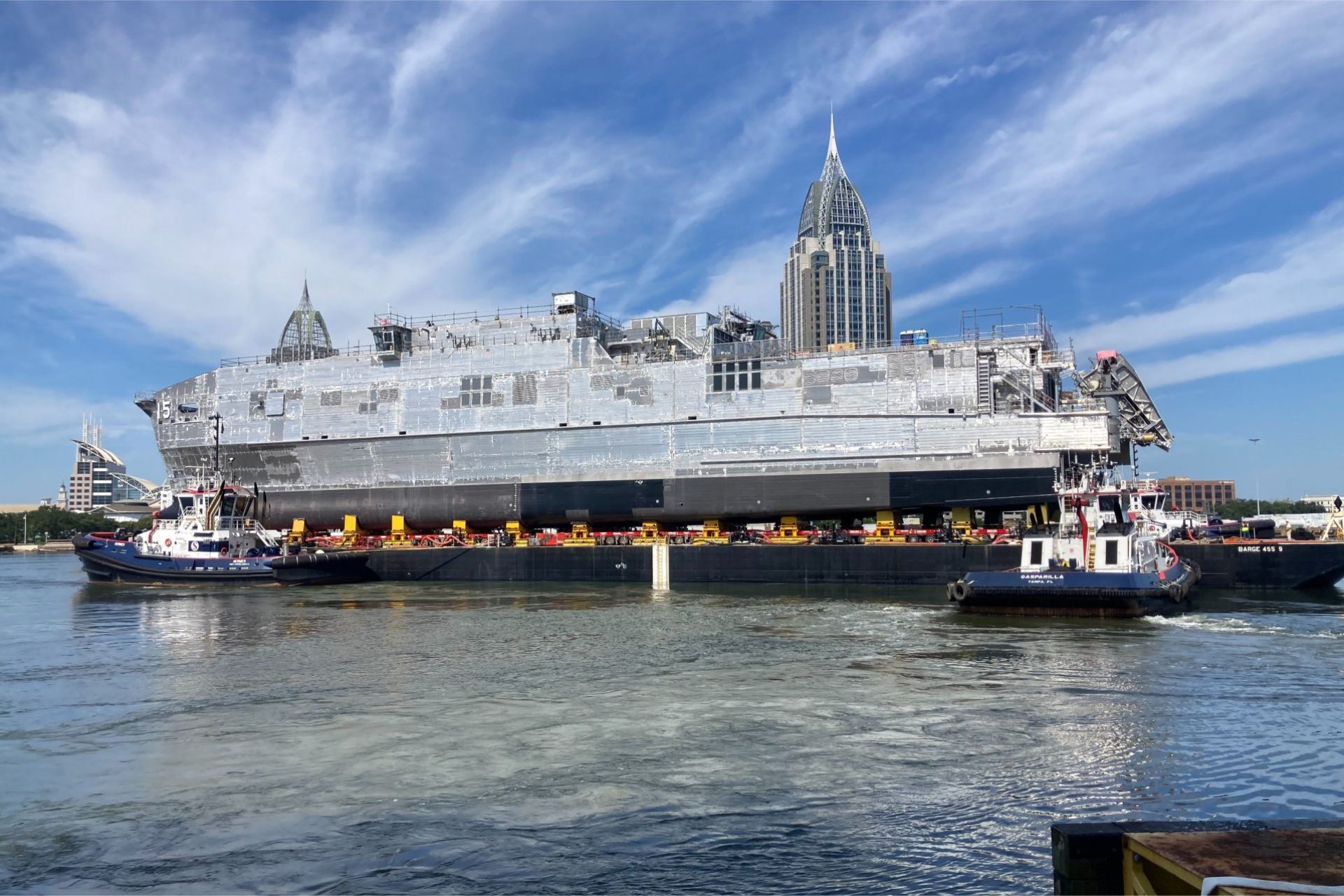Breaking News
Austal USA launches USNS Point Loma EPF 15 at Alabama Shipyard prepares for sea trials.
According to information published by Austal USA on September 3, 2024, the company has successfully launched the USNS Point Loma (EPF 15) at its advanced shipbuilding facility in Mobile, Alabama.
Follow Army Recognition on Google News at this link

Spearhead-class Expeditionary Fast Transport USNS Point Loma. (Picture source: Austal)
The vessel, the 15th Expeditionary Fast Transport (EPF) for the U.S. Navy, was christened earlier in August and is now docked for final outfitting and system activation as it prepares for sea trials later this year.
The launch process involved the use of self-propelled modular transporters (SPMTs), which lifted the ship nearly three feet off the ground and moved it approximately 400 feet onto a deck barge moored next to the final assembly bay.
The barge then transported the EPF downriver to Austal USA's West Campus repair yard. Here, the ship was placed in a floating dry dock, submerged to enable the vessel to float for the first time. The ship was subsequently returned upriver to Austal USA's new construction facility.
Spearhead-class EPF
The Spearhead-class Expeditionary Fast Transport (EPF) vessels, initially known as Joint High Speed Vessels (JHSV), are a class of high-speed, shallow-draft catamaran ships operated by the U.S. Navy's Military Sealift Command.
These vessels were designed and built by Austal USA to fulfill a variety of roles, particularly the rapid intra-theater transport of troops, military vehicles, and equipment. With a length of around 103 meters and a displacement of about 2,400 tons, these ships can achieve speeds up to 43 knots.
Despite their utility, the EPFs have faced operational challenges. The design of the ships, optimized for high-speed transit in calmer waters, has proven less effective in rougher sea states, which has limited their ability to perform certain tasks, such as at-sea equipment transfers. The Navy has acknowledged these limitations and is exploring modifications to improve their performance in more challenging conditions.
Recent developments in the program include enhancements to increase their operational roles. The introduction of the EPF Flight II variant marks a shift towards more specialized missions, such as providing expeditionary medical support. These newer variants are equipped with advanced medical facilities and can support aviation operations.


























